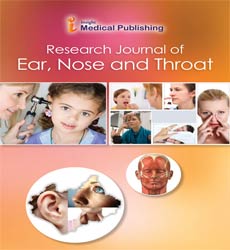Abstract
Enlarging palatal defect secondary to invasive microbial infection vs. Bisphosphonate-related maxillary osteonecrosis in a 60-year-old guamanian male patient: a diagnostic challenge
Objectives:
- To present a case of bone necrosis in a 60-year-old male with multifactorial etiology involving the hard palate which includes the following:
- Opportunistic pathogens found in the oral cavity
- Systemic diseases which may delay resolution of the disease process
- Bisphosphonate therapy and its established effect on bone turnover
- To emphasize the importance of proper diagnosis and identification of related risk factors in achieving proper management of a disease with atypical course
- To illustrate the diagnostic dilemma involved in the management of palatal necrosis presenting clinically as an invasive microbial infection unresponsive to standard medical and surgical treatment
Method:
- Study Design: A case report
- Setting: Tertiary hospital in Metro Manila
- Subject: One in-patient
Results:
The patient in this particular case presented with osteonecrosis of the maxilla. Patient was placed on various antibiotic treatments which include broad-spectrum antibiotics and Penicillin G IV for 6 weeks, and surgical debridement with no resolution of bone necrosis. Bisphosphonate therapy was later on discontinued resulting to healing of palatal mucosa.
Conclusion: Maxillary osteonecrosis presents a diagnostic challenge due to the multifactorial nature of this pathology which can be easily missed without careful history taking and proper diagnosis. Essential diagnostic imaging includes panoramic X-ray, plain and contrast CT scans, and MRI.1 These help in differentiating BON from other conditions with similar pathology such as osteomyelitis, osteonecrosis, metastasis, or osteosarcoma.1 Microbiologic and histopathologic examinations are also important in directing the proper management of bone osteonecrosis.1 The standard medical treatment for this disease include Penicillin G IV for 2-6 weeks and broad- spectrum antibiotics targeting Actinomyces and other microbial organisms which can inhabit the oral cavity.2 Failure of treatment encourages the need to further investigate other possible cause of osteonecrosis.2 Bisphosphonate-induced therapy used in patients prone to osteoporosis such as those undergoing hemodialysis has been linked with osteonecrosis of the maxilla and the mandible due to its rapid bone turnover.3 Healing of the maxilla can be compromised by opportunistic organisms found in the oral cavity and further delayed by metabolic disease such as diabetes. Hence, thorough consideration of other uncommon factors is imperative its proper management especially when common treatments have been exhausted with no consequential clinical improvement.
Case Report:
Several reports regarding palatal osteonecrosis have been reviewed and studied. By far, established associations with this disease are postanesthetic necrosis, nasomaxillary malignancies, embolization, and necrotizing fungal infection.5 We are presented with a case of a 60 years old male with progressive palatal defect despite series of diagnostic tests, repeated biopsy, aggressive medical and surgical treatment. Failure of resolution despite the use of standard medical treatment, broad-spectrum antibiotics and surgical debridement prompted the need to further investigate on other possible related factors. Finally, with meticulous further investigation, control of metabolic disease, and sequential monitoring, the patient eventually responded to the treatment with gradual mucosal healing of the hard palate.
Author(s): Jacqueline T. Cua-Lim
Abstract | PDF
Share This Article
Google Scholar citation report
Citations : 16
Research Journal of Ear Nose and Throat received 16 citations as per Google Scholar report
Abstracted/Indexed in
- Google Scholar
Open Access Journals
- Aquaculture & Veterinary Science
- Chemistry & Chemical Sciences
- Clinical Sciences
- Engineering
- General Science
- Genetics & Molecular Biology
- Health Care & Nursing
- Immunology & Microbiology
- Materials Science
- Mathematics & Physics
- Medical Sciences
- Neurology & Psychiatry
- Oncology & Cancer Science
- Pharmaceutical Sciences
